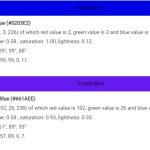In this article, we will be defining what the term COM means. This term has 3 meanings: a Domain Suffix, a DOS Command File, and a Component Object Model. We will go over these 3 definitions.
Table of Contents
Three Meanings of the Term COM
Domain Suffix

The suffix .com is often used to denote that an internet service provider offers domain name services for commercial entities – businesses or organizations who want their own web address on the World Wide Web.
A domain name is a unique string of characters that identifies one or more IP addresses on the Internet and tells your browser where to find them.
For example, if you type in “google” into your browser’s URL bar, you are taken to google’s site because they have registered the domain google.com with the Internet Corporation for Assigned Names and Numbers (ICANN), which is an international organization that coordinates the global internet naming system.
DOS Command File
A command-line interface or CLI, which is also called a DOS Command File, allows you to combine multiple commands together into a simple file with just one load command in front of them all.
This format will then be executed by the operating system which runs each command in sequence until it reaches either a goto, label, or end command at the end of the file.
The commands are normally formatted so that different lines are displayed on the screen when running it through DOS, but this can vary depending on what options you choose when executing it.
COM Component Object Model
The Component Object Model, or COM, is a platform-independent, distributed, object-oriented system for creating binary software components that can interact.
In layman’s terms, what this means is that you can create an individual component—a reusable software code that performs a specific function—and then combine it with other components written by different developers to add additional functionality to your projects.
For example, if we had two separate components: one which calculated the cost of certain items and another which calculates how much sales tax they will incur; we could make our own component that takes these two values and returns the total price of the items together with their tax in one calculation. This would allow us to reuse this third component with any other components that we build in the future to calculate additional values.
In this way, each component is a self-contained functional element that can be used over and over again throughout different projects. The advantage of this system is that it allows developers to focus on creating individual components to solve particular problems, without having to reinvent the wheel every time they want to use a piece of pre-written code for their program.
Furthermore, by using COM, developers can easily combine different components together and create entirely new applications from them—without having to start from scratch and write an entire program from scratch.
That’s because all you need to do is import other people’s components into your project as needed and then string them together into your own customized program with Visual Basic, Java, C++, and HTML.





